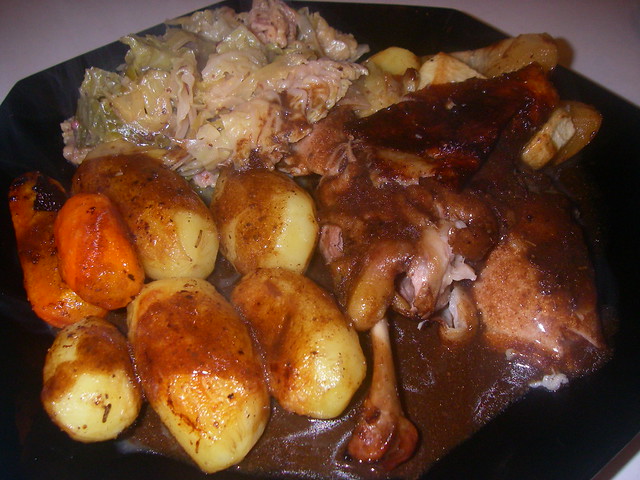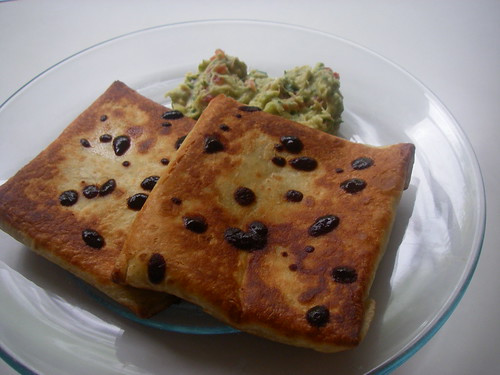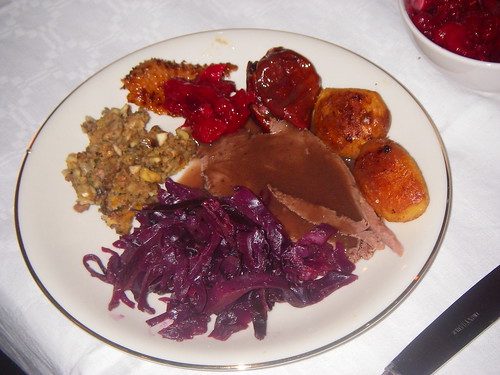British-Chinese Fusion Cooking: Tea-poached Roast Duck
Tuesday, October 25th, 2011(Cross-posted from my LJ)
Chinese-Western fusion cooking sounds like a recipe for disaster, but I had an idea for a warm seasonal dish that relies on local ingredients and exotic spices and captures the spirit of my recent up-and-downs in China and the UK: Tea-and-cider-poached roast duck with caramelised apples and pears & mustardy cabbage.
Sounds like a mouthful? That’s because it is. I have often wanted to cook tea-smoked duck but decided that I’d better not get the fire brigade involved, and the weather is decidedly too cold for outdoors cooking at this time of year. In fact, Shanghai and London share the same temperatures today (14-15o during the day, around 7o at night—it gets cold in Shanghai too).
So I thought I’d experiment with duck poached in tea and then roasted. A spice glaze added before roasting would boost flavour and warmth and, since duck partners well with fruit, I decided to add cider to the mix and serve it with caramelised apples and pears. Mustardy cabbage struck me as a good counter-balance to the richness of the meat and sweet, buttery fruit.
With regard to the latter, it is important not to make this dish too sweet. Duck is already sweet but is mostly served with tooth-achingly gooey sauces or glazes. I halved the sweetness content of this recipe and made sure that the sugar was caramelised to the point of bitterness before adding the fruit, but your mileage may vary. As for flavouring, I used whatever was to hand: a number of ancient Oolong tea bags with a best-before date back in 2005 and a few drops of lemon essence stood in for the Earl Grey tea used in the original recipe.











